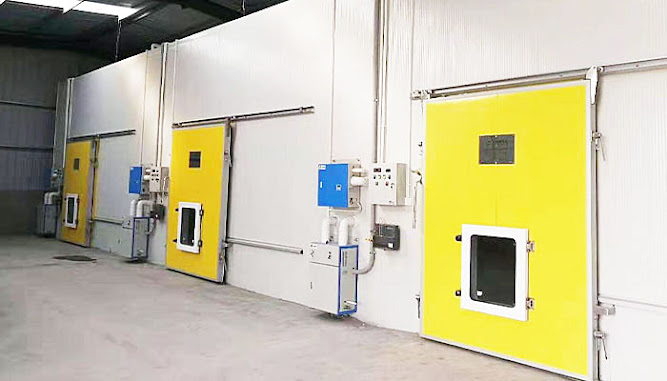Introduction
Cold rooms play a crucial role in various industries, including food storage, pharmaceuticals, and logistics. Proper specifications are essential for ensuring optimal performance, energy efficiency, and compliance with industry standards. This guide explores the general cold room specifications to help you achieve the best results for your storage needs.
1. Types of Cold Rooms
Cold rooms can be categorized into different types based on temperature range and usage:
Chiller Cold Rooms: Maintain temperatures between +2°C and +8°C for fresh produce, dairy, and beverages.
Freezer Cold Rooms: Maintain temperatures from -18°C to -25°C for frozen foods and ice cream.
Ultra-Low Temperature (ULT) Cold Rooms: Operate at temperatures below -40°C, used for pharmaceuticals and biomedical storage.
2. Structural Specifications
Panels: Insulated panels made of polyurethane foam (PUF) or polystyrene for thermal efficiency.
Thickness: Typically ranges from 60mm to 150mm depending on temperature requirements.
Doors: Available in swing or sliding options with airtight seals to prevent thermal loss.
Flooring: Non-slip, reinforced, and insulated floors to withstand heavy loads.
3. Refrigeration System
Compressor: Air-cooled or water-cooled options based on ambient conditions.
Condensing Unit: Ensures efficient heat dissipation for stable temperature control.
Evaporators: Designed to maximize airflow and prevent ice buildup.
Refrigerants: Eco-friendly options like R134a, R404A, or CO2-based refrigerants.
4. Temperature Control and Monitoring
Digital Thermostats: Allow precise temperature adjustments.
Remote Monitoring Systems: Enable real-time tracking and alerts.
Data Logging: Records temperature variations for compliance and auditing purposes.
5. Ventilation and Air Circulation
Airflow Design: Ensures even temperature distribution.
Humidity Control: Essential for sensitive storage applications such as pharmaceuticals.
Defrost Mechanisms: Automatic or manual defrosting to prevent ice accumulation.
6. Energy Efficiency Considerations
LED Lighting: Reduces heat emission and energy consumption.
Insulation Materials: High-density polyurethane foam for superior thermal retention.
Door Seals and Curtains: Minimize heat exchange during door openings.
Energy-Efficient Compressors: Variable-speed compressors for optimized power usage.
7. Safety and Compliance Standards
Fire-Resistant Panels: Enhance safety in case of fire incidents.
HACCP Compliance: Essential for food storage applications.
ISO and GMP Standards: Ensure adherence to international storage regulations.
Backup Power Supply: Generators or UPS systems to prevent spoilage during power failures.
Conclusion
Understanding and implementing the right general cold room specifications is vital for maintaining efficiency, safety, and compliance. Whether for food preservation, pharmaceuticals, or industrial storage, the right design, materials, and refrigeration systems ensure optimal performance. By investing in energy-efficient solutions and advanced monitoring technologies, businesses can enhance cold storage reliability and sustainability.

Comments
Post a Comment